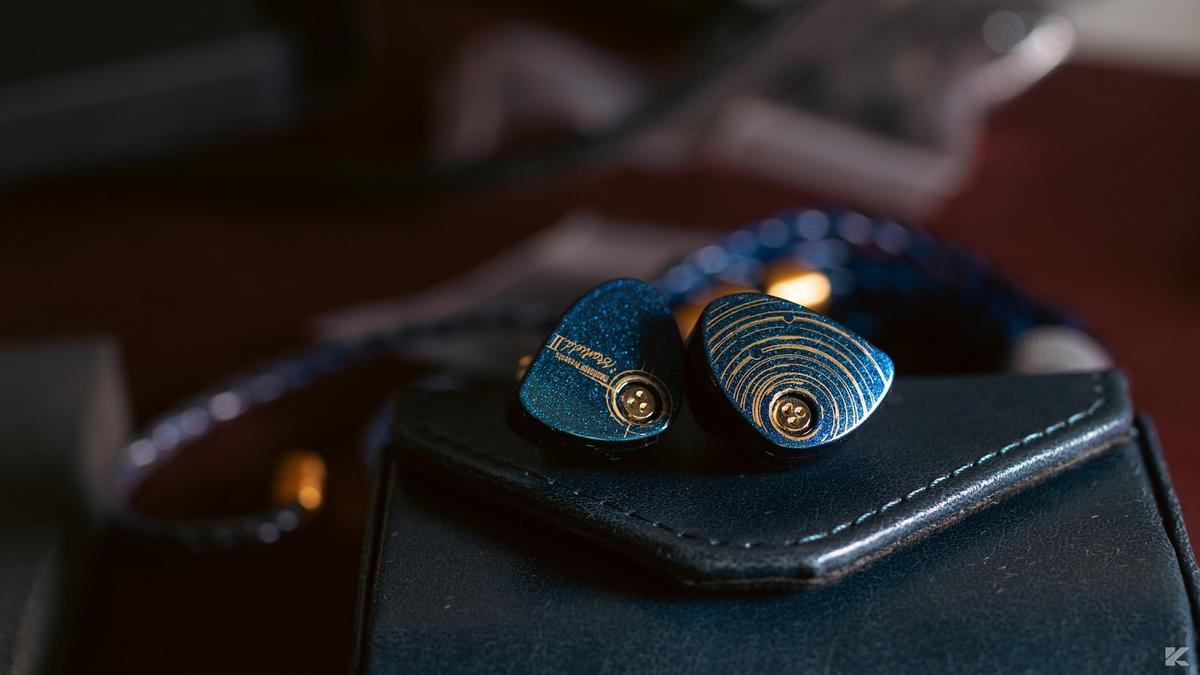The Starfield II are an improvement over the original, but not without weaknesses.
- Solid zinc-alloy housing, stunning faceplate design
- Good stock accessories
- Fast, punchy bass response with a good sense of slam
- Better treble response than OG Starfield
- Good staging and imaging
- Paint prone to chipping off
- Upper-mid shout can be too much for some
- Source and tip-sensitive sound
- Tuning filter are clumsy in practice
Moondrop has had a busy 2023, with multiple releases practically every month. The brand even updated some of its “greatest hits” models, and the Starfield II falls nicely into that segment.
Sporting a revamped driver and acoustic architecture, the Starfield II promise wholesale upgrades over the long in the tooth OG model.
Sequels rarely manage to live up to expectations, however, so their work is cut out for the Starfield II. Read on.
Unboxing and First Impression
Design and Build
The Starfield II have a stunning design.
The glitter-infused navy blue zinc alloy shell creates a dazzling display when light hits at the right angle. The golden streaks serve as a contrast while adding character to the design.
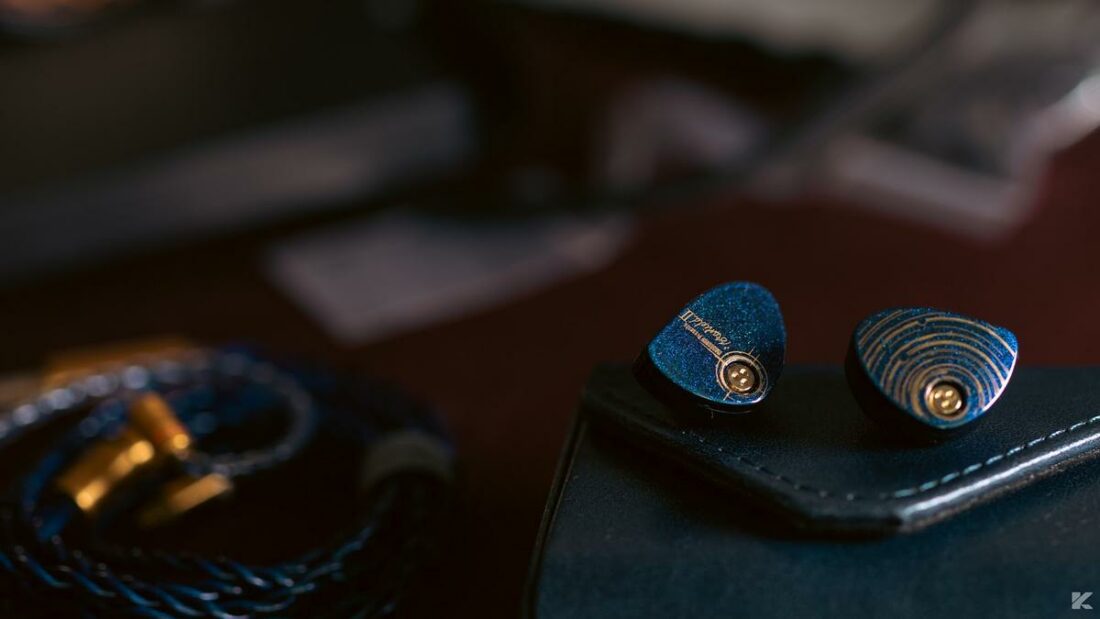
Moreover, the back vent is stylized by integrating it into a circular disc. Overall, the Starfield II stand out in terms of overall aesthetics and have a flashy design that does not go overboard.
One interesting design aspect is the ability to seal one of the front vents with the supplied rubber plugs. Sealing the front vent increases bass response by a couple of decibels.
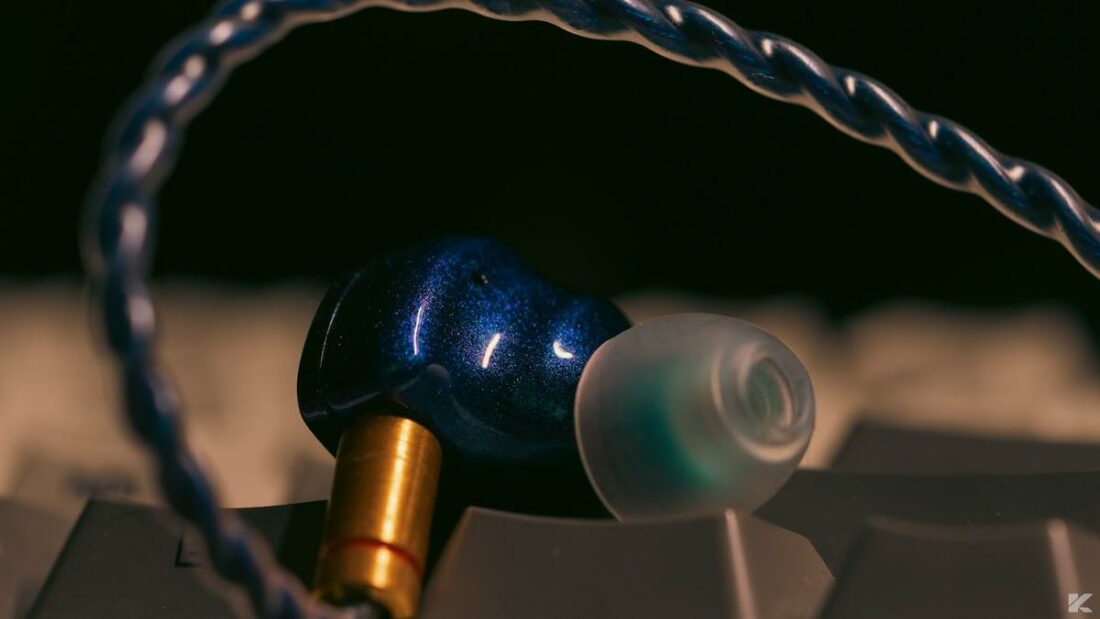
Moreover, you can unscrew the nozzle and add damping materials inside, which opens options for additional modding.
Cable
The stock cable has good ergonomics, even though the sheathing could be more pliable. The matching gold-blue color scheme adds cohesion to the overall outlook.
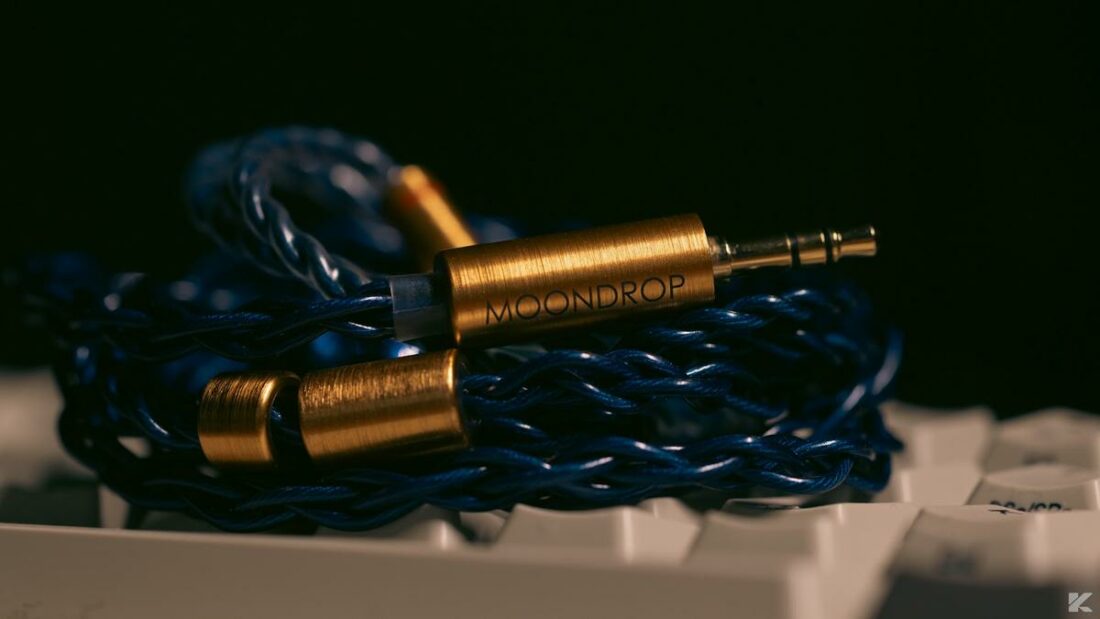
Comfort
The Starfield II are comfortable despite the relatively hefty shells (11g per earpiece). Due to the numerous vents, there is no pressure buildup. However, isolation takes a hit, so I’d recommend blocking the inner vent and using foam tips for maximum isolation.
Under the Hood
The Starfield II utilize a 10mm Lithium-Magnesium alloy driver with an independent suspension surrounding the dome. Moondrop says that the driver has superior acoustic properties than pure Beryllium foil drivers, but I am not entirely sure of that claim.
Nonetheless, the driver has tremendous potential and usually appears on higher-priced IEMs, so kudos to Moondrop for lowering the barrier of entry to pure metal-foil diaphragms.
How Do the Moondrop Starfield II Sound?
The Moondrop Starfield II have a warm, V-shaped sound signature.
Despite the warmth in the mids, the rather sizeable upper-midrange boost results in enhanced vocal clarity – perhaps a tad too much at times. Transient response is remarkably fast for the price tag, resulting in excellent note separation.
Bass
Bass is one of the highlights of the Starfield II, which is no surprise given the OG Starfield also had a lush, “rounded” bass response.
In contrast to the OG, the sequel focuses more on the slam and punch factor, as heard on Siamese Youth’s Nariyeh Thanei. Bass speed is also noticeably improved, resulting in fast basslines not bleeding into each other.
Bass texture could have more organicness, but it’s a common characteristic of metal dome drivers to have less “richness” in the mid-bass. Overall, it is an excellent bass response that masterfully toes the line between impact and overzealousness.
Midrange
The mids are the most controversial aspect of the Starfield II.
The lower-mids are tuned well and match my preferences. A slight warmth from the upper-bass adds some body and “sweetness” to male vocals. However, the pinna gain can be too aggressive in many modern tracks, where the added compression becomes exaggerated.
As such, the Starfield II can be shouty for those who do not prefer vocal forwardness.
For me, the lower-treble presence somewhat balances things out, but I cannot listen to the Starfield II at high volumes due to the upper-mid prominence.
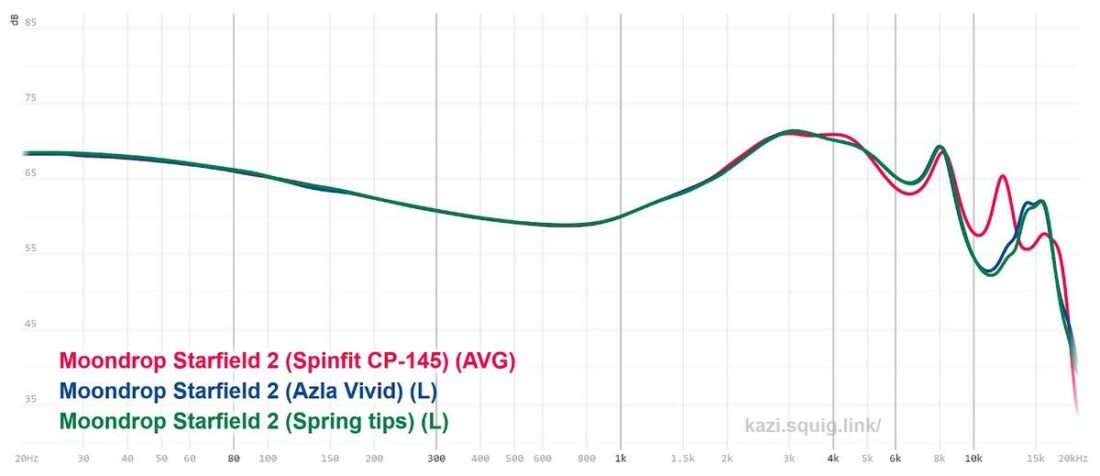
Treble
Treble on the Starfield II is a marked improvement over the OG and other past Moondrop IEMs in this range, e.g., Moondrop Aria. The treble roll-off is not so abrupt and the upper-treble response is noticeably more extended, thanks to the latest-gen driver.
Treble timbre has a slight metallic sheen to cymbals and hi-hats, but it’s nothing too intrusive and can be mitigated via tip rolling. Speaking about eartips, the treble response can vary depending on the type of tips. The graph above showcases how three different tips change lower to upper-treble region frequency response.
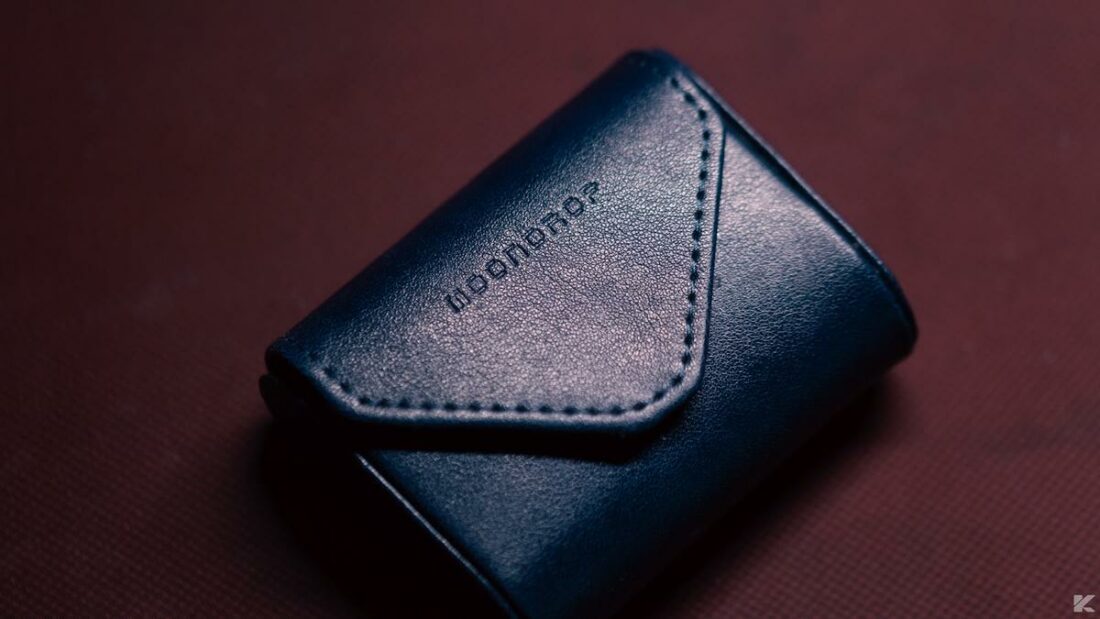
Technicalities
Overall, staging and imaging are excellent on the Starfield II, though the sense of stage width is hampered by the midrange forwardness. Macrodynamic punch is rendered well, but microdynamics (subtle changes in volume) are not so evident.
Comparisons
Vs Simgot EA500
The Simgot EA500 are priced a bit lower than the Starfield II but have some similarities. Both employ metal shells and removable nozzles, and both have a somewhat bass and upper-mid boosted V-shaped tuning.
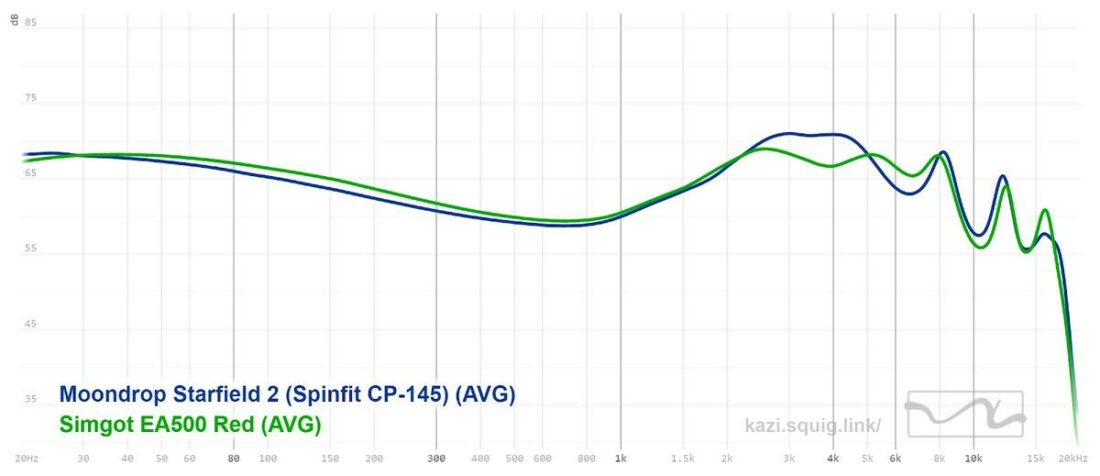
In terms of accessories, the Moondrop Starfield II have a slightly better carrying case, and the design is more of a standout. The Simgot EA500 are less prone to shell discoloration but tend to attract smudges and scratches.
As for the sound, the EA500 are more relaxed in the upper-mids while having slightly more treble presence. The Starfield II have better staging and imaging but are also more source-sensitive.
In the end, for those who do not want to experiment with ear tips and sources, the EA500 are the safer choice. Those who already have a collection of those “peripherals” will find the Starfield II more rewarding in the long run.
Where to Buy
Who Should Buy This?
Listeners who are looking for a hyper-engaging sound and those who can take a bit of upper-midrange glare will appreciate the Starfield II.
Final Thoughts
Moondrop Starfield II will not appeal to everyone due to the upper-mid prominence. At the same time, they may be the most technically proficient single dynamic driver IEMs under USD$150.
The main issue lies elsewhere: there are just too many IEMs, all fighting for the short attention span of potential buyers. Moondrop sometimes sabotages themselves by releasing a newer model too soon in similar price ranges, as the release of Aria 2 right after Starfield II will surely kill sales of the latter model.
There is great potential in the Starfield II’s driver setup if you can tweak a few things. But Moondrop is too focused on releasing the next great thing than making their current products as good as they can be.
As such, for better or worse, the Starfield II will remain the unloved, underrated sequel.
What’s in the Box?
- Moondrop Starfield II IEMs
- 3 pairs of silicone tips
- 3.5mm cable
- Carrying case
- Vent plugs
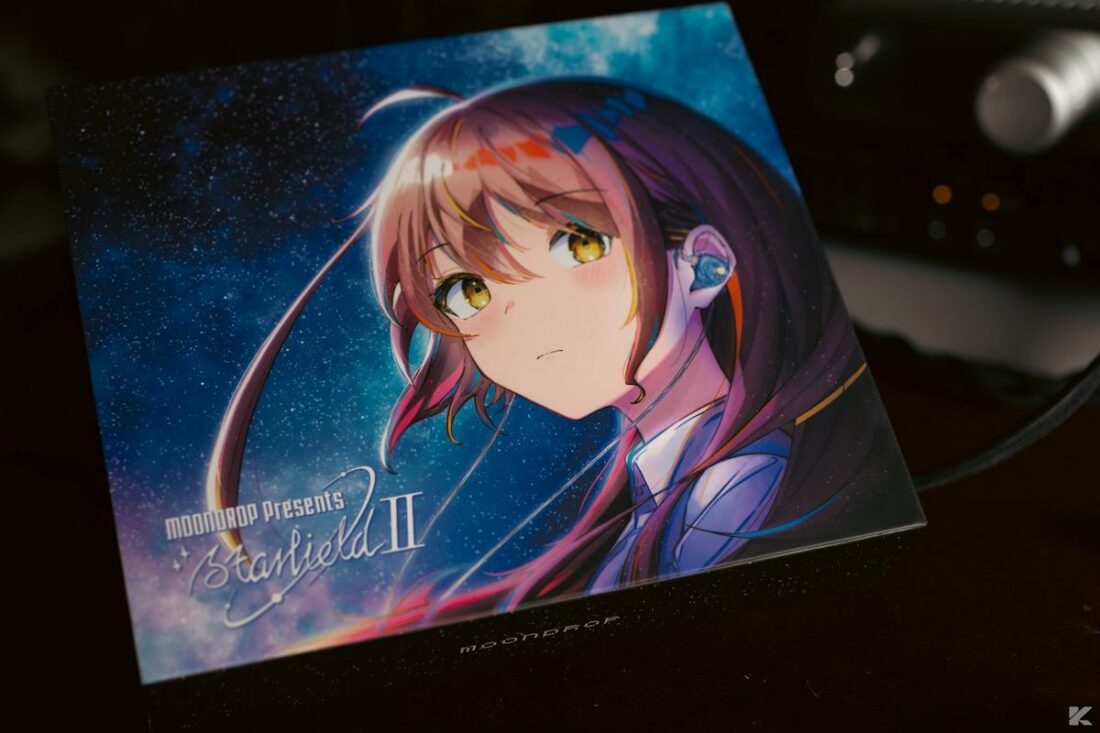
Technical Specifications
- Form: IEM
- Driver: 1 x Li-Mg alloy Dynamic Driver
- Impedance (Ohm): 15 ohms
- Sensitivity (dB): 103 dB/mW
- Weight (g): 11 g (per earpiece)
- Removable Cable: Y
- Source Jack: 3.5mm
- Cup/Shell Jack: 2-pin
